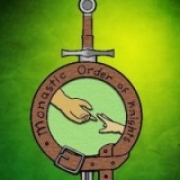- Posts: 6458
Does Religion Belong On the Lawn of a Capitol Building?
Attachment h622f4d6.jpg not found
I'm curious to see how the legal and political conversations play out, but I'm afraid we are about to see intolerance rear its ugly head again. Thoughts?
Please Log in to join the conversation.
Let them all build their little idols.
And that is what they are, idols.
They can call them monuments if they wish.
But let the Satanic group try to do.
This will show just how much it really is an idol.
But of course this is my opinion.
Take it, or leave it, as is.
Please Log in to join the conversation.
- Wescli Wardest
-

- Offline
- Knight
-

- Unity in all Things
In English, the exact term is an offshoot of the phrase, "wall of separation between church and state", as written in Thomas Jefferson's letter to the Danbury Baptist Association in 1802. In that letter, referencing the First Amendment to the United States Constitution, Jefferson writes:
"Believing with you that religion is a matter which lies solely between Man & his God, that he owes account to none other for his faith or his worship, that the legitimate powers of government reach actions only, & not opinions, I contemplate with sovereign reverence that act of the whole American people which declared that their legislature should 'make no law respecting an establishment of religion, or prohibiting the free exercise thereof,' thus building a wall of separation between Church and State."
The Bill of Rights was one of the earliest examples in the world of complete religious freedom but it was interpreted as establishing a separation of Church and State only after the letter of Jefferson. At the time of the passage of the Bill of Rights, many states acted in ways that would now be held unconstitutional, some of them with official state churches. All of the early official state churches were disestablished by 1833.
Also see...
http://en.wikipedia.org/wiki/First_Amendment_to_the_United_States_Constitution
http://en.wikipedia.org/wiki/Declaration_of_the_Rights_of_Man_and_of_the_Citizen
This does not prohibit the display of religious items or the observance of religious rites by government. It simply means that the governing body should not have the authority to enact laws which limit the individual freedom of religious choice.“make no law respecting an establishment of religion, or prohibiting the free exercise thereof,”
For further reading see...
http://en.wikipedia.org/wiki/Everson_v._Board_of_Education
Please Log in to join the conversation.
- Alexandre Orion
-

- Offline
- Master
-

- Council Member
-

- Senior Ordained Clergy Person
-

- om mani padme hum
- Posts: 7095
But this is not religion. This is provocation. So, we may say that some serious contemplation on what one supports is in order ...
In the second century, Diogenes of Œnoanda, built a wall overlooking this city - quite clearly seen from the market-place - reminding people of the Epicurian fundamentals of happiness and warning them that luxuries do not serve well this end. Were these 'religious' constructs erected in that optic, then perhaps --
-- yet it feels very much that these messages are not 'reminders' of religion, but due to their controversial use, simply one in-group asserting itself over other groups. It comes back to provocation, not religion.
And using religion or religious symbolism as a political device or otherwise divisive means is simply empty one-upsmanship ...
Please Log in to join the conversation.
And Alexandre, you have given me another perspective to think about. I tend to agree that this is simply a contest of ego rather than any real demonstration of devotion. I'm now questioning what the true motive behind these "monuments" might be.
Please Log in to join the conversation.
Please Log in to join the conversation.
Rickie The Grey wrote: I'm OK with it. Besides I think to much is made out of this stuff. I'd rather see more religion than less.
I will have to agree with you. Sense the time prayer went out of School in the US, it has been going downhill sense then.
Please Log in to join the conversation.

